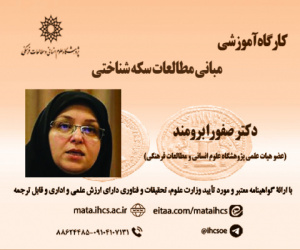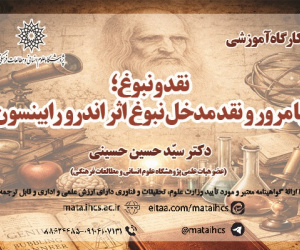هوش مصنوعی و رعایت حقوق بشر کودکان (مقاله علمی وزارت علوم)
درجه علمی: نشریه علمی (وزارت علوم)
آرشیو
چکیده
انتظار می رود فنّاوری های یادگیری ماشین به طور فزاینده ای در زندگی روزمره مردم تأثیر بگذارد. نسل بعدی کودکان، بیشترین تأثیر را از این فنّاوری خواهند داشت؛ زیرا آن ها در عصری از داده های بزرگ و سیستم های ماشینی متولد و بزرگ خواهند شد که تصمیمات مربوط به زندگی شان از تحصیل، دسترسی به اعتبار و فرصت های شغلی و بسیاری از موارد دیگر را تحت تأثیر قرار خواهد داد. در این مقاله، به بررسی تأثیرات هوش مصنوعی در حقوق بشر کودکان پرداخته و سعی شده است راهکارهایی برای حفاظت از حقوق کودکان در دنیای پویای فنّاوری و هوش مصنوعی ارائه شود. همچنین تأثیر و تعامل با حقوق بشر و به ویژه کودکان درمورد حق آموزش و رعایت حریم خصوصی، آزادی بیان و منع تبعیض مسائل مهمی است که متولیان اصلی از جمله شرکت ها، والدین و دولت ها باید به آن به طور ویژه بپردازند. تعیین محدودیت زمانی، نظارت والدین، فیلترینگ محتوا،آگاه سازی و آموزش ودرنهایت ارتقای الگوریتم ها و سیستم های هوش مصنوعی از جمله تعهدات شرکت ها و والدین و دولت هاست.Artificial Intelligence and Children's Human Rights
Machine learning technologies are expected to increasingly affect people's daily lives. The next generation of children will be most affected by this technology; because they will be born and raised in an era of big data and machine systems that will affect their life decisions from education, access to credit and job opportunities, and many other things. In this article, the effects of artificial intelligence on children's human rights have been investigated and solutions have been tried to protect children's rights in the dynamic world of technology and artificial intelligence. In addition, the impact and interaction with human rights and especially children's right to education and respect for privacy, freedom of expression, and prohibition of discrimination are important issues that the main guardians such as companies, parents, and governments should address. Keywords: Artificial Intelligence, Machine Learning, Deep learning, Children's HumanRights, Government 1. Introduction Artificial intelligence, as one of today's technological advancements, has a profound impact on human life. This emerging technology allows us to enhance the speed and efficiency of various processes. However, it also presents challenges and risks to human rights, especially children's rights. International organizations such as UNESCO emphasize that AI must be developed in conjunction with respect for human rights and children's rights. Therefore, AI should be designed to ensure the protection, security, and privacy of children, while also promoting equal access for children to technology and appropriate education regarding its use. In this context, parents, companies, and governments must utilize all their resources to ensure that, in addition to providing children access to AI and respecting their human rights, supportive measualso implemented. This article examines the impacts of AI and its subsets, such as machine learning and deep learning, on children's human rights and attempts to propose solutions for protecting children's rights in the dynamic world of technology and AI. It begins by clarifying some specialized concepts related to AI and its connection to certain children's rights, analyzing both negative and positive impacts, and ultimately identifying the obligations of the main stakeholders, namely companies, governments, and parents. The main research question is: What are the negative and positive impacts of AI on children's human righwhat what actions should governments, companies, and parents take to support these rights? 2. Methodology The approach of research is qualitative and the method of research is a qualitative content analysis of international and domestic standards, laws, and guidelines. 3. Results and Discussion The issue of protecting the cultural, social, and economic rights of children and adolescents in the Fourth Industrial Revolution is important and deserving of attention. It must first be supported by families, governments, and subsequently by other governmental and civil institutions, as well as other stakeholders in children's affairs because those who are children today will shape the future. Children today need to live well and have their rights respected. The digital environment significantly facilitates children's access to high-quality, inclusive education, including reliable resources for formal, informal, and independent learning. Additionally, the use of digital technologies enhances interaction between teachers and students. The importance of digital technologies in improving access to education and supporting their learning and participation in extracurricular activities is noteworthy. Committed countries should support educational and cultural institutions such as public and specialized libraries and museums to enable children to access various learning and educational resources in the digital environment, including local resources and materials in languages that children understand. These resources and other valuable materials support children's engagement through their creative, civic, and cultural activities, enabling them to learn online and continuously. Committed countries must invest fairly in technology infrastructure in schools and other learning environments to ensure the availability and affordability of a sufficient number of computers, high-speed broadband, and reliable power sources, as well as provide teacher training on the use of digital education technologies and timely access and maintenance of school technologies. They should also support the creation and dissemination of diverse and high-quality digital educational resources in languages that children understand, ensuring that existing inequalities, such as those experienced by girls, are not exacerbated. Committed countries must ensure that the use of digital technologies does not undermine in-person education and is justified for educational purposes. For children who do not physically attend school or those living in remote areas or disadvantaged or vulnerable situations, digital educational technologies enable access to remote learning via mobile devices. Additionally, digital education products and services should not create or exacerbate inequalities in children's access to in-person educational services. As mentioned, various human rights related to artificial intelligence and children are significant. Rights such as the right to education, freedom of expression and information, the right to development, privacy, and protection against discrimination should be considered by governments, parents, and companies. The following will explore the relationship between artificial intelligence and these rights and how they should be upheld by governments, companies, and parents. 4 .Conclusions and Future Research The role of artificial intelligence in children's lives, ranging from play and education to learning and understanding the world, will significantly increase in the coming years. This is closely related to rights such as freedom of expression, play, children's privacy, and their right to education. Therefore, the government must take serious measures to protect children from the negative impacts of AI. Moreover, experts are worried about the global skills gap in AI. To bridge this gap, it is necessary to make AI access and structure more human-centered. In other words, the best time to start teaching AI is during childhood. In this regard, the role of children's lives and the impacts of AI on them should be analyzed to assess the risks of using this technology and to utilize it appropriately for the well-being of children. As part of this assessment, stakeholders should collaborate to identify the positive and negative applications of AI in children's lives and develop a child rights framework based on AI that outlines the rights and mutual responsibilities of governments, companies, parents, and children globally. To protect children's rights when using online platforms, governments, parents, and private companies can implement the following strategies: 1. Time Limits: Set time limits for children's use of online platforms, especially YouTube. You can use existing tools and settings in operating systems or parental control software. 2. Content Filtering: Use tools and content filters to prevent children from accessing inappropriate or harmful content. Some platforms provide content-filtering tools. 3. Parental Monitoring: Actively monitor children's activities on online platforms. Parents' involvement in their children's online experiences and reviewing content and advertisements before they are shown to children is helpful. 4. Education: Teach children about safe and responsible use of online platforms, recognizing inappropriate content, and reporting it to parents or authorities. 5. Algorithm Enhancement: Strengthen algorithms and AI systems to identify and remove inappropriate or harmful content from online platforms. 6. Collaboration with Organizations: Collaborate with organizations, researchers, and child rights advocates to provide solutions for improving the protection of children's rights in the use of online platforms. 7. Encouraging Educational Content: Encourage children to watch and engage with educational and constructive content on online platforms. 8. Informing Parents: Provide appropriate information to parents about strategies, risks, and concerns related to children's use of online platforms. Industry Collaboration: Promote collaboration between the online platform industry, child rights organizations, and regulatory bodies to improve laws and standards regarding the protection of children's rights in the online space.









